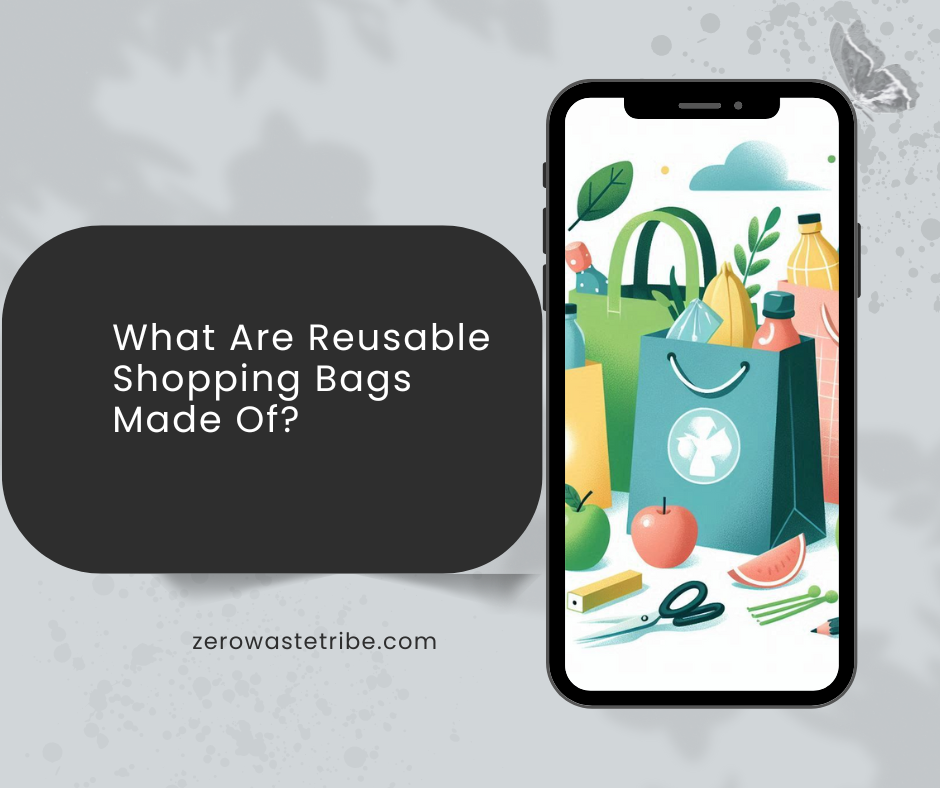You’ve probably got a growing collection of reusable shopping bags stuffed in your kitchen drawer or car trunk. I know I do! After years of testing different types (and admittedly forgetting them at home more times than I’d like to admit), I’ve learned a ton about what these eco-friendly alternatives are actually made of. Let me break it down for you in a way that’ll help you choose the right bags for your shopping needs.

The Most Common Materials You’ll Find
Non-Woven Polypropylene: Those Familiar Grocery Store Bags
Remember those $1 bags near the checkout at your local grocery store? The slightly fuzzy ones that seem to last forever? Those are typically made of non-woven polypropylene (NWPP). I’ll be honest – when I first learned these were still made of plastic, I was a bit disappointed. But here’s the thing: one of these bags can replace hundreds of single-use plastic bags over its lifetime.
These bags are super practical. I’ve had one from Trader Joe’s that’s been going strong for three years now. They’re perfect for groceries because they’re water-resistant (no more soggy bags from leaked milk!), and you can just wipe them clean if something spills. The only downside? They’ll eventually start to break down if you leave them in your car too long – the sun really does a number on them.
Cotton Bags: The Natural Choice
Cotton bags are probably what you picture when someone mentions eco-friendly shopping bags. They’re those classic, canvas-like totes that often come with cute designs or brand logos. I love using mine for farmers’ market trips – they just feel right for carrying fresh produce.
But here’s something that blew my mind: cotton bags actually need to be used thousands of times to offset their environmental impact. Why? Cotton farming uses a ton of water and resources. That’s where organic cotton comes in – it’s grown without synthetic pesticides and uses less water. Still not perfect, but definitely better for the planet.
Recycled PET: From Water Bottles to Shopping Bags
This is one of my favorite innovations in the reusable bag world. These bags are made from recycled plastic bottles (PET stands for polyethylene terephthalate – try saying that five times fast!). The process is pretty cool: they take used plastic bottles, clean them, shred them into tiny pieces, then melt and spin them into new fibers.
I’ve got a few of these, and they’re surprisingly strong. Last week, I managed to fit two gallons of milk, a watermelon, and a bunch of other groceries in one bag. It didn’t even strain at the seams!
The Up-and-Coming Materials
Hemp: The Superhero of Sustainable Fabrics
Hemp bags are the new kids on the block, and they’re making quite an impression. These bags are tough as nails – I’ve had one for about a year now, and it still looks brand new despite regular use. The best part? Hemp grows like a weed (pun intended!) and needs very little water or pesticides.
Yes, they’re more expensive than your standard reusable bag, but think of it as an investment. Mine has already outlasted several cheaper bags, and it’s nowhere near giving up.
Jute and Canvas: The Old Reliables
If you’re looking for that classic, rustic look, jute and canvas bags are your best bet. They’re like the vintage jeans of the shopping bag world – they just get better with age. My canvas bag has developed this perfect worn-in look, and it’s still as sturdy as the day I bought it.
Real Talk About Caring for Your Bags
Let’s be honest – most of us don’t clean our reusable bags nearly as often as we should. After a particularly unfortunate incident involving a leaky package of chicken (don’t ask), I learned the hard way about proper bag maintenance. Here’s what I’ve figured out:
For NWPP bags:
- Quick wipe-down after each use
- Hand wash when needed (trust me, you’ll know when)
- Air dry completely – they get musty if you don’t
For cotton and canvas:
- Toss them in the washing machine regularly
- Cold water works fine
- Air dry to prevent shrinkage
Making the Right Choice for You
After trying pretty much every type of reusable bag out there, here’s my practical advice:
If you’re just starting out: Go for a couple of NWPP bags. They’re affordable and versatile.
For heavy-duty shopping: Look into recycled PET bags – they’re surprisingly strong.
For farmer’s market trips: Cotton or hemp bags feel more appropriate and look great in Instagram photos (let’s be real, we all do it!).
For long-term investment: Hemp or organic cotton will last the longest and have the lowest environmental impact over time.
Looking Ahead: What’s Next for Reusable Bags?
The reusable bag world is constantly evolving. Companies are experimenting with new materials and better production methods. I’ve even seen some bags made from experimental biodegradable synthetics, though they’re not widely available yet.
The Bottom Line
Here’s what I’ve learned from my years of reusable bag experimentation: the best bag is the one you’ll actually remember to use. All these materials have their pros and cons, but consistency is what really matters. Keep a stash in your car, by your front door, or in your purse – wherever you’ll actually remember them!
Disclaimer: This article is based on personal experience and research. Environmental impact data varies by study and region. Please check your local recycling guidelines, as material acceptance differs by location. While I’ve tried many of these bags personally, your experience may vary.








